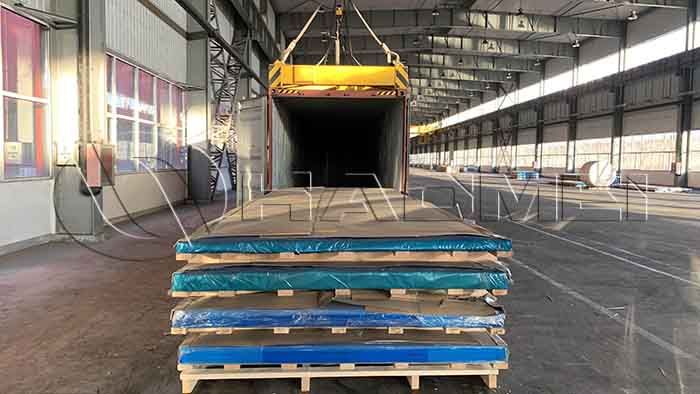5052 5083 Aluminum for Boat Building
Aluminum is the most abundant metal element. The pure aluminum is active and has low strength. Other elements are often added to pure Al to form alloys to meet the application requirements. Aluminum alloys have low density, but high strength ratio, close to or exceeding high-quality steel, good plasticity, excellent electrical conductivity, thermal conductivity and corrosion resistance.
The 5000 Al-Mg alloys like ASTM5083 and ASTM5052 have been widely used in the marine environment because of its low density, high specific strength, and good corrosion resistance. It is an ideal material for manufacturing light high-speed ships. The composition content of 5083 aluminum alloy Mg 4.0~4.9, Mn 0.4~1.0, Cr 0.05~0.25, Fe≤0.40, Si≤0.40, Zn ≤0.25, Ti ≤0.15, Al the remainder. . Among them, Mg is the main strengthening element, which plays a certain role in solid solution strengthening.

A corrosion-resistant passivation film is easy to form on the surface of aluminum alloy, which has a certain protective effect on the substrate, but this layer of oxide film is often non-uniform, and the thickness is very thin, only about 4 nm, which is not enough to resist corrosion in harsh environments.
Seawater is a highly corrosive medium, and the Cl-will cause the dissolution and destruction of the passivation film, so that the passivation film loses its protective effect, and then causes the material to corrode and fail. Studies have confirmed that aluminum alloys do not undergo uniform corrosion, and the typical form of corrosion is pitting corrosion. Pitting corrosion can cause corrosion and perforation of materials, which seriously affects the strength and safety of materials. Therefore, measures need to be taken to eliminate or weaken the occurrence of pitting corrosion and enhance the practicability of materials.
The 5083 aluminum alloy has a small activation ring in seawater, and it is easy to restore the passive state. At the same time, the breakdown potential and protection potential are higher than the self-corrosion potential in the stable state, reflecting its good corrosion resistance in seawater. Cl- is the active ion that induces pitting corrosion of 5083 aluminum alloy, and the content of Cl- significantly affects the pitting potential.
Aluminum is an amphoteric metal with relatively active chemical properties, and chemical reactions can occur in both alkaline and acidic environments. Experiments have confirmed that cathodic polarization within a certain range will inhibit the anode reaction and significantly improve the corrosion resistance of aluminum alloys. However, when the cathodic polarization potential exceeds a certain value, cathodic corrosion of aluminum alloys may occur.
The self-corrosion potential of ASTM5083 in still seawater is about -760 mV, the pitting corrosion breakdown potential is -690 mV, and the corresponding pitting corrosion protection potential is -720 mV. Electrochemical cathodic protection can effectively inhibit the formation and development of pitting corrosion in 5083 aluminum alloy. In the seawater system, the suitable cathodic protection potential range of 5083 aluminum alloy is between -800~-1000 mV.
Original Source:https://www.marinealu.com/a/5052-5083-aluminum-for-boat-building.html
Tags: 5083 aluminum plate ,
Prev:How About The Corrosion Rate of Aluminum 5052 in Seawater